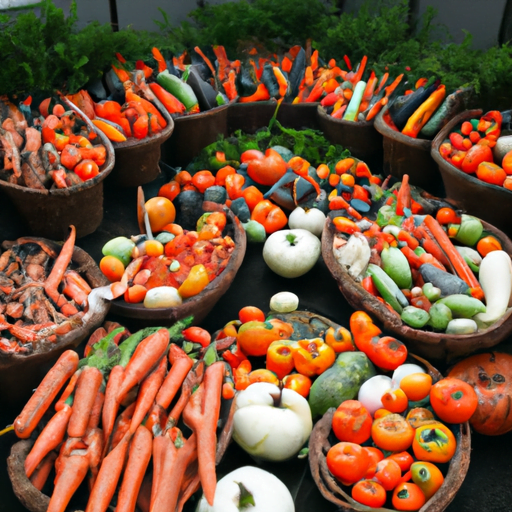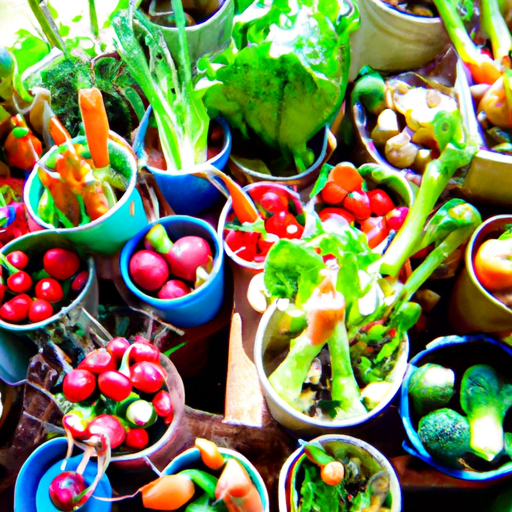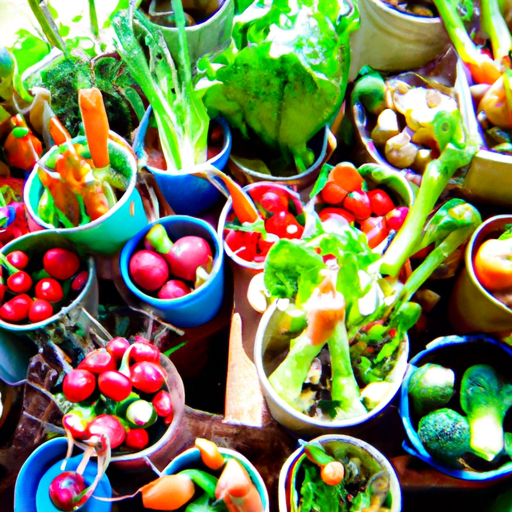Have you ever wondered what plant could provide you with the most food if you were living off the grid? It’s a fascinating question, especially when you consider the abundance of plants that exist in our natural world. From fruits and vegetables to grains and legumes, there are so many options to choose from. In this article, we will explore some of the top food-producing plants and discover which one takes the lead in terms of providing the most sustenance.
When it comes to food production, there are a few factors to consider. Firstly, you want a plant that can yield a high quantity of food. Secondly, the nutritional value of the food it produces is important. And lastly, you want a plant that is easy to cultivate and maintain, especially if you are living off the grid. We will delve into each of these factors and provide you with a comprehensive understanding of the top food-producing plants. By the end of this article, you’ll be equipped with the knowledge to grow your own food and sustain yourself in a self-sufficient manner.
So, if you’re ready to explore the fascinating world of food-producing plants, keep reading. We’ll uncover the secrets to maximized food production and provide you with a range of options that you can consider. Whether you have a small backyard garden or acres of land, there is a plant out there that can cater to your needs. Get ready to transform your lifestyle and create a sustainable food source by harnessing the power of nature’s bountiful offerings.

Top Food-Producing Plants
Living off the grid and becoming more self-sufficient has been gaining popularity in recent years. One of the best ways to achieve this is by growing your own food. Not only does growing your own food provide a sense of fulfillment, but it also offers numerous benefits for individuals and communities. From ensuring food security to reducing grocery expenses and promoting sustainability, food-producing plants provide a sustainable and healthier way of living. In this article, we will explore the top food-producing plants that can help you achieve self-sufficiency and improve your overall quality of life.
Improved Food Security
One of the main benefits of growing your own food is improved food security. When you grow your own food, you have better control over your food supply. You no longer have to rely solely on grocery stores or external suppliers for your daily sustenance. By growing food-producing plants, you become less vulnerable to disruptions in the food supply chain, such as natural disasters or supply shortages. This increased food security can provide you and your family with peace of mind knowing that you always have access to fresh and nutritious food.

Reduced Grocery Expenses
Growing your own food can also significantly reduce your grocery expenses. By eliminating the need to purchase certain fruits, vegetables, and herbs from the supermarket, you can save a substantial amount of money over time. The cost savings can be even greater if you decide to grow plants that are typically pricey, such as organic produce or exotic herbs. Additionally, the more you grow, the less you need to buy, which can lead to further financial savings.
Healthier and Fresher Food
Another advantage of growing your own food is the ability to enjoy healthier and fresher food. When you grow your own food, you have complete control over how it is grown, ensuring that it is free from harmful pesticides and chemicals. This means that you and your family can consume food that is more nutritious and devoid of potentially harmful substances. Additionally, freshly harvested food retains more of its nutritional value compared to store-bought produce, which often goes through a lengthy transportation and storage process.
Sustainable and Environmentally Friendly
Growing your own food is not only beneficial for you but also for the environment. By reducing your reliance on industrial agriculture, you can contribute to a more sustainable and environmentally friendly way of producing food. Growing your own food allows you to use organic gardening practices, such as composting and natural pest control methods, which reduce the need for synthetic fertilizers and pesticides. Additionally, homegrown food requires less transportation, saving energy and reducing greenhouse gas emissions associated with the distribution of commercial produce.
1. Leafy Vegetables
Leafy vegetables are a great option for growing your own food. They are not only nutritious but also versatile in terms of cooking options. Lettuce, spinach, kale, and Swiss chard are some popular choices. These vegetables are easy to grow at home and require minimal space. You can grow them in containers or directly in your garden. Leafy vegetables also have a high yield potential, so you can enjoy a continuous supply throughout the growing season.
2. Fruit-Bearing Trees
Growing fruit-bearing trees can provide you with a year-round harvest and a variety of fruits to enjoy. Fruit trees such as apple, pear, cherry, and peach can be grown in your backyard or even in pots if space is limited. Apart from the delicious fruits they produce, fruit trees also add an ornamental beauty to your garden. The blossoms in spring and the vibrant colors of the fruits in summer and fall can enhance the overall aesthetic appeal of your outdoor space.
3. Legumes
Legumes, such as beans, peas, and lentils, are not only rich in proteins and fiber but also beneficial for the soil. Legumes have the unique ability to fix nitrogen from the air and convert it into a form that can be used by other plants. This nitrogen-fixing property enhances soil fertility, reducing the need for synthetic fertilizers. Additionally, legumes can be grown in rotation with other crops, further improving soil health and reducing pests and diseases.
4. Root Vegetables
Root vegetables are a staple in many cuisines and offer a long shelf life and versatile cooking options. Carrots, potatoes, onions, and beets are examples of root vegetables that are relatively easy to grow. They can be stored for a long time, making them an excellent choice for extending your food supply. The nutritional value of root vegetables is also noteworthy, as they are packed with essential vitamins and minerals.
5. Herbs and Spices
Growing herbs and spices can bring flavor enhancement and medicinal properties to your meals. Whether it’s basil, rosemary, mint, or thyme, herbs are easy to grow and can be harvested as needed. They not only add a fresh and vibrant taste to your dishes but also have various health benefits. Many herbs have medicinal properties and are used in traditional medicine for their healing properties. Additionally, herbs are attractive additions to your garden, with their fragrant leaves and colorful blooms.
6. Staple Crops
Staple crops play a crucial role in providing sustenance for large populations. Rice, wheat, corn, and potatoes are examples of staple crops that are cultivated in diverse climates around the world. While growing these crops on a small scale may not provide enough food to meet all your needs, they can still contribute to your overall self-sufficiency. Understanding the cultivation requirements of staple crops can be valuable knowledge in times of food scarcity or emergency situations.
7. Edible Flowers
Adding edible flowers to your garden not only enhances your culinary experiences but also adds visual appeal to your dishes. Flowers such as nasturtiums, pansies, and marigolds are not only beautiful but also safe for consumption. They can be used to garnish salads, desserts, and beverages, adding a pop of color and a unique flavor profile. Some edible flowers also have medicinal and healing properties, making them a valuable addition to your self-sufficient lifestyle.
8. Nut and Seed Trees
Nut and seed trees provide a rich source of healthy fats, proteins, and nutrients. Almonds, walnuts, and cashews are examples of nut trees that can be grown at home, depending on the climate. These trees not only offer a bountiful harvest but also contribute to the sustainability of agroforestry systems. They provide shade, prevent soil erosion, and support the growth of other plants by improving soil health.
In conclusion, growing food-producing plants offers numerous benefits for individuals and communities. From ensuring food security to reducing expenses and promoting sustainability, these plants provide a sustainable and healthier way of living. Whether you choose to grow leafy vegetables, fruit-bearing trees, legumes, root vegetables, herbs and spices, staple crops, edible flowers, or nut and seed trees, each plant has its own unique advantages. So, start your journey towards self-sufficiency and enjoy the rewards of growing your own food.




